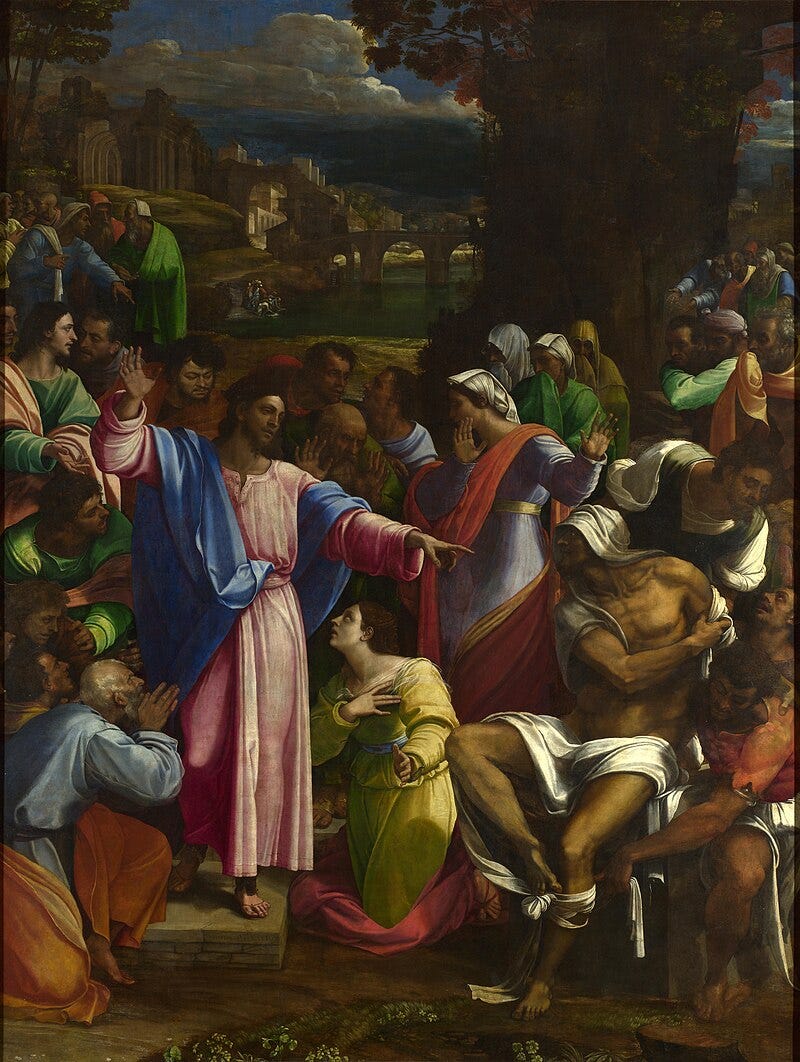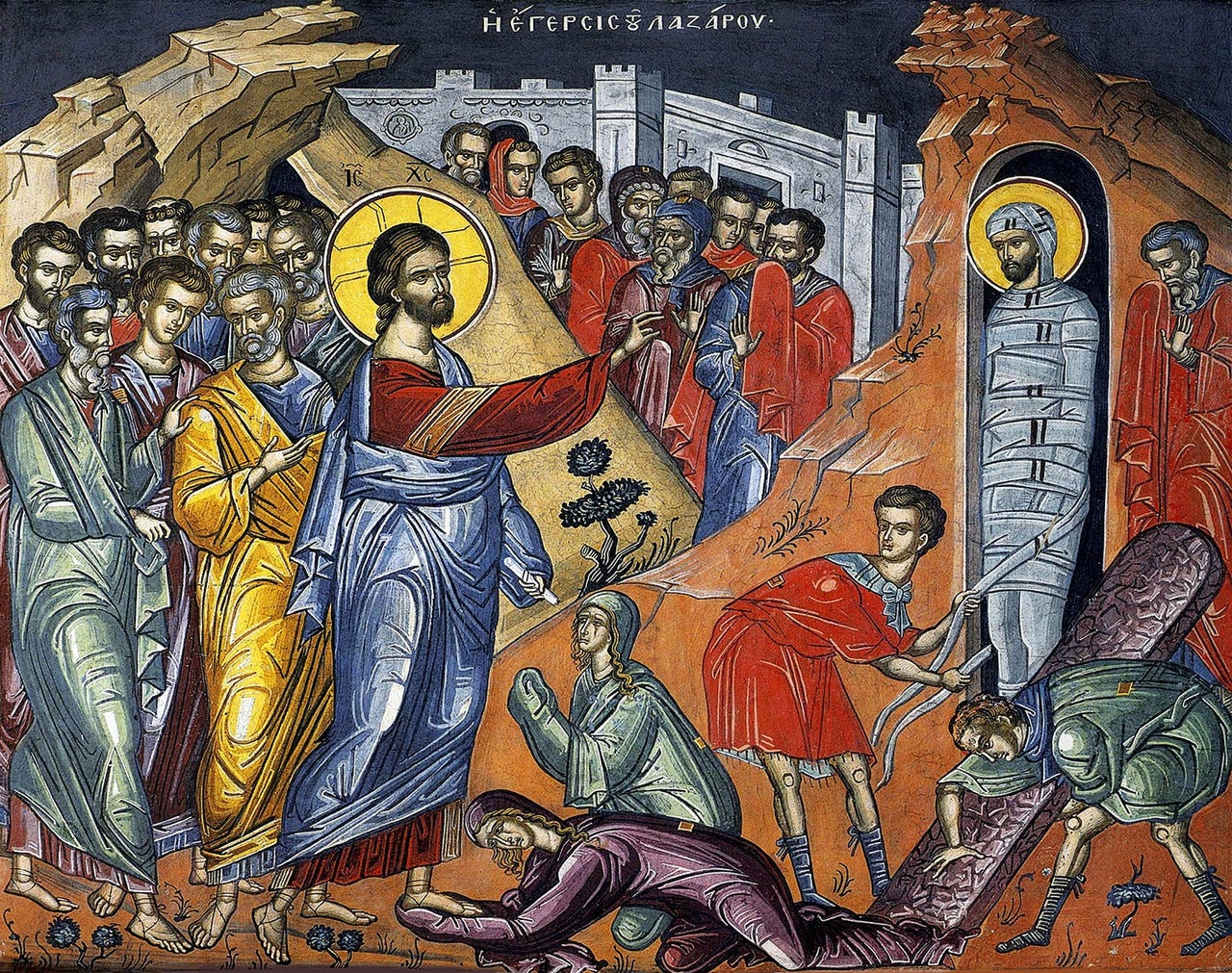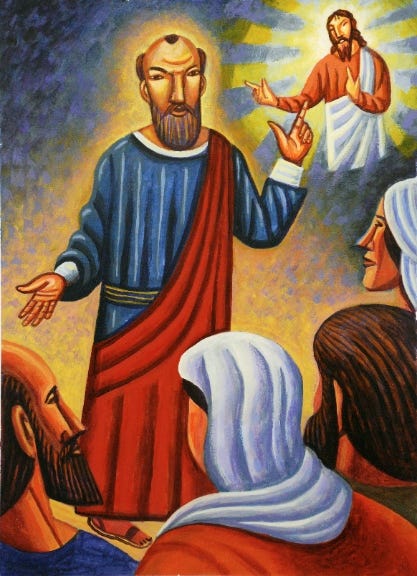John 11:7-15
Lent 2
Today, we are continuing our study of the raising of Lazarus. The beauty of this story is that while raising a man who had been dead for four days is impressive and worthy of our attention, many other themes and threads run through the story.
I will remind us of our “ground rules” for this study. First, if we are examining this miracle through our modern eyes, and still, cannot look at this miracle in the same way we look at miraculous medical healings today. We are examining this story through the eyes of faith.
Next, please keep an open mind to this story. Zombies might creep you out, but the raising of Lazarus and the themes of this miracle run deeper than our population's notions of the dead returning to life.
Finally, we need to talk about the Bible. I want us to remember that we hold the highest regard for our holy scriptures. We believe God speaks to us through the words of the Bible and that the Bible contains “all things necessary for salvation.”[i] We believe the writers of the Bible were inspired by God, filled with the Holy Spirit, as they conveyed the truth to the best of their understanding. On the bible, theologian James Cone wrote: “But there is no perfect guide for discerning God's movement in the world, Contrary to what many (conservatives)[ii] say, the Bible is not a blueprint on this matter. It is a valuable symbol for pointing to God's revelation in Jesus, but it is not self-interpreting. We are thus placed in an existential situation of freedom in which the burden is on us to make decisions without a guaranteed ethical guide.”
Let’s talk about Lazarus.
The story goes like this: Lazarus is sick. His sisters – Mary and Martha – send for Jesus. Jesus waits a few days before departing. His disciples are nervous about returning to Judea. Jesus arrives, and Lazarus is dead. Jesus weeps. The tombstone is moved, and Jesus says, “Lazarus, come out!”[iii] Lazarus leaves his tomb, and his burial clothes are removed. It was a miraculous moment that moved observers to faith in Christ and simultaneously set into motion the events that would transpire against Jesus.
Our focus today is on verses 7-15.[iv]
Jesus tells the disciples it is time to “go to Judea again.”[v] The disciples question Jesus’s judgment because “the Jews”[vi] had previously attempted to stone Jesus the last time he was in the region, and the disciples feared this outcome again.
“Rabbi, the Jews were just now trying to stone you, and you are going there again?”
“The Jews.”
A few years ago, I spent nearly a week with seminarians and rabbinic students for a time of ecumenical study. We studied the scriptures together and explained what we believed most meaningful in our ministries. I shared how much I appreciated the Jewish Passover Festival because, in learning more about the festival, I learned more about the Lord’s Supper.
Midway through the week, we read work from the church reformer Martin Luther titled “On the Jews and Their Lies.” I was in my second round of seminary and had never heard of this 65,000-word anti-Judaic and antisemitic treatise. If you are unfamiliar with this document (and if you are do not fret, a pastor friend of mine who is much smarter and more learned than me first learned about the document on Thursday), the first ten sections document Luther’s views of Judaism and the Jewish people. Then, Luther provides seven actions Protestants can carry out to remedy the situation, including burning synagogues, taking gold and silver away from Jews, and only giving it back after they repent and convert. Luther had no issue with Jews who converted to Christianity, but those who did not convert were on the receiving end of Luther’s words and call to action.
One of the places where Luther and others who write and encourage anti-Judaic and antisemitic find inspiration for their writings and acts is the phrase “The Jews.”
Before we can dive into the phrase, we need to acknowledge that Jesus was Jewish. Jesus was born into the House of David. He was Jewish royalty. He and his family did all of the things Jewish families did.
Jesus was presented in the temple seven days after his birth, and his parents made an offering to the Lord in accordance with Jewish Law. He observed the Sabbath, worshiped in synagogues, and observed Jewish festivals like the festival of Dedication, which was the scene of him nearly being stoned. Throughout his life, Jesus never held citizenship within the Roman Empire. He did not have the same rights a Roman citizen would have had.
Roman citizens were Gentiles and Jesus was Jewish.
Consider for a moment what aspects of Jesus’s life most help you understand his Jewish identity. Share that with the people worshiping around you this morning.
The problem lies with John’s use of the phrase “the Jews,” which is used nearly seventy times and is usually in opposition to Jesus. James Martin (channeling Professor Amy-Jill Levine) points out that lumping various Jewish factions into one group – Pharisees, Sadducees, chief priests, scribes, etc. – assumes “sweeping conclusions about Jewish culture based on the limited (and often skewed) presentation of them in the Gospels.”[vii] To lump all Jews into one category is the same as using “the Knights of Columbus, the Kiwanis Club, the Masons, and the Boy Scouts,”[viii] writes Professor Levine, to describe our American society.
When we lump a group of people in a category like “the Jews,” “the Muslims,” “the Russians,” “the Ukrainians,” “the Americans,” “the Mexicans,” “the Palestinians,” or the “Israelis,” we risk an attempt at reducing the imago dei[ix] – the made in the image of God-ness – of those people into a caricature that fits our prejudices and ignores the rich diversity of the group of people. If we learned anything from the Holocaust, if we are learning anything from what is happening in Gaza today, it is that once a group of peoples’ identity has been reduced to the “other,” the group responsible for the ills of another group, the removal of those people is much easier.
Murder and genocide are much easier to sell when the humanity of “the other” has been removed. In recent years Christians in the United States have been coming to grips with the church’s role in the dehumanization of Indigenous populations of North America along with those forcibly moved to North America throughout the Trans-Atlantic slave trade. Which led to what James Cone describes as “the lynching era” when “white Christians lynched nearly five thousand black men and women in a manner with obvious echoes of the Roman crucifixion of Jesus.”[x]
Why do you think misconceptions about Jewish people exist within the church? Take this question a step further and consider why misconceptions about Muslims, Jews, other religions, and even “other” Christians exist within the church. Share that with the people worshiping around you this morning.
In his letter to the church in Galatia, Saint Paul put an end to the us vs. them “othering” that was occurring in the church. He wrote, “There is no longer Jew or Greek, there is no longer slave or free, there is no longer male and female; for all of you are one in Christ Jesus.”[xi]
The labels and prejudices we use to “other” one another were torn down on the cross. Christ, in taking the sins of the world upon himself, put an end to us versus them. This is where we find the Good News of this portion of the story of Lazarus: even while John uses problematic language, the grace of God remains. Lazarus, a Jew, was raised. Jesus, a Jew, will be raised. And the promise holds true for you and those we deem anything other than God’s beloved.
[i] https://www.umc.org/en/content/our-christian-roots-the-bible
[ii] Cone, James. A Black Liberation Theology.
[iii] John 11:43
[iv] Over five weeks, we will study from verse 1 through 44. Feel free to read ahead but know that we will study specific pericopes each week.
[v] John 11:7
[vi] John 11:8
[vii] Martin. Page 141.
[viii] Martin. Page 142.
[ix] A person being made in the image of God can never be taken away as it is an image given by God. God has ultimate agency, even when we think we are more powerful that our Creator.
[x] Cone, James. The Cross and the Lynching Tree.
[xi] Galatians 3:28

















Share this post